|
The
|
|||||||||||||||||||||||||||||||||||||||||||||||||||||||||||||||||||||||||||||||||||||||||||||||||||||||||||||||||||||||||||||||||||||||||||
THE BURGENLAND BUNCH NEWS - No. 283 January 31, 2018, © 2018 by The Burgenland Bunch All rights reserved. Permission to copy excerpts granted if credit is provided. Editor: Thomas Steichen (email: tj.steichen@comcast.net) BB Home Page: the-burgenland-bunch.org BB Newsletter Archives: BB Newsletter BB Facebook Page: TheBurgenlandBunchOFFICIAL Our 22nd year. The Burgenland Bunch Newsletter is issued monthly online. It was founded by Gerald Berghold (who retired from the BB in the Summer of 2008 and died in August 2008). |
|||||||||||||||||||||||||||||||||||||||||||||||||||||||||||||||||||||||||||||||||||||||||||||||||||||||||||||||||||||||||||||||||||||||||||
| Current Status Of The BB: * Members: 2584 * Surname Entries: 8213 * Query Board Entries: 5715 * Staff Members: 13 |
|||||||||||||||||||||||||||||||||||||||||||||||||||||||||||||||||||||||||||||||||||||||||||||||||||||||||||||||||||||||||||||||||||||||||||
|
|||||||||||||||||||||||||||||||||||||||||||||||||||||||||||||||||||||||||||||||||||||||||||||||||||||||||||||||||||||||||||||||||||||||||||
1) THE PRESIDENT'S CORNER (by Tom Steichen)  This
month's collection of bits and pieces in Article 1 is a bit longer
than normal, mostly because I got a little long-winded for two of the pieces... but I'm hoping
you will survive that breeze! This
month's collection of bits and pieces in Article 1 is a bit longer
than normal, mostly because I got a little long-winded for two of the pieces... but I'm hoping
you will survive that breeze!Article 2 is a member assistance article, though the person assisted is not yet a member! I choose to publish it because it was A Research Request Passed On From The BG and provided an educational opportunity... can't pass those up! In Article 3, I provide what I think of as a companion piece to an article published in Newsletter 280 about the establishment of the precursor [the Apostolic Administration] to the Burgenland Catholic Diocese when Burgenland, as a whole, transitioned from Hungarian to Austrian rule. The current article looks at Burgenland's Catholic Church in 1945, as it and Burgenland try to cope with and transition from war and Nazi rule. While this article deals with the Catholic church, I would assume the Burgenland Lutheran church was dealing with similar issues, so it should be of general interest. Article 4 is, admittedly, a fairly heavy article, being concerned with European Union Funding to the less affluent regions of the EU. Nonetheless, I hope it provides some insight into the changes such funding promoted in Burgenland and also into the stress that the funding has placed on the EU itself. The remaining articles are our standard sections: Historical Newsletter Articles, and the Ethnic Events and Emigrant Obituaries sections. Editorial Email Address Change: If you look closely at the Newsletter header section, you may note that I have changed my personal email address. That change occurred because the profile for it in my computer's email client software became damaged beyond repair, forcing a move to a new address (it could receive messages but not send them). Thus my new email address is tj.steichen@comcast.net. If you saved my old address (t_steichen@comcast.net), please replace it with this new one. The old address will remain for a while as I transition everything to the new one, then will be deleted. More Transcribed Records: BB Member Margaret Roosdahl, of Golden, British Columbia, Canada, whose ancestors came from St. Michael bei Güssing, Tobaj and Punitz and settled in New York and Saskatchewan, has transcribed the available Catholic church records of Sankt Michael (1828-1895) and has kindly donated them to the Burgenland Bunch. Birth and Marriage records are completed and the death records are underway. The records, in sortable table format, can be found directly here: SanktMichaelRecords.htm or via the main Vital Records Transcriptions link found on the BB home page. We extend deepest thanks to Margaret for her gracious contribution! By the way, Margaret says that "I was inspired to contact you about putting my index online by the ones that the BB website already has online. Hopefully more people will also come forward with their work." She also said, "There is an extra benefit in putting indices on line - if my computer crashes I won't be crying over lost work!" So, thanks again to those of you who previously contributed. For the rest of you, please be so inspired if you have records you can share! We'll be glad to be a "back up" for you. Poetic Words For Thought on the Turning of the Years: I recently stumbled again across Alfred Lord Tennyson's poem Ulysses and meditated on how appropriate it seemed for me. The poem's text is spoken to his men by Ulysses, who has been an "idle King" for three years after returning to Ithaca from the Trojan Wars. He wishes to be more than just a useless "household name," famous only for what he has done rather than for what he is doing. The poem is Tennyson's "call to arms" to continue to be useful in life. For me, it explains, in part, why I choose to work with the BB and I think it explains why so many of the BB staff do what they do. Given that, I'll quote selected lines from the poem ...and leave you to make of them what you will:
Actually, since I didn't request "Spam Arrest" to forward my messages (in fact, I'd rather
they stay out of the way), I find no value in this "consideration" they speak of. Thus I
certainly do not wish to be bound by their agreement.
While the BB is not a "commercial" entity, we are a "Web site," so I can't warrant that we
are not one (yes, I know the text can be read as implying it refers to a "commercial website"
...but reasonable people could argue that "commercial" only modifies the word "product" in this
sentence) and, although we believe our members have consented to be on our Newsletter Notice
List, I can't prove that fact for each and every address on our list, as some addresses have
been on our list from near the start of the BB over 20 years ago. Regardless, reasonable people
can disagree on whether a message is "unsolicited commercial e-mail" (i.e., spam) and whether
"express consent" had been given. But why would I want to get in a potential legal debate over
these things by "representing" or "warranting" anything?
Well, I'd hope that we are not in violation of any law but I have no idea of what is
in these cited statutes and I certainly do not know what laws every single locality or state may
have propagated. Again, why would I want to get in a potential legal debate over this by
"representing" or "warranting" anything about our messages?
No, I neither understand nor acknowledge that it is fair and reasonable that I should agree
to abide by this unrequested "service" or its arbitrary restrictions!
Nope! And I don't care if you think so!
Now I wouldn't have a problem with the Recipient getting the relief specified in (1) had I
really sent spam, but I see no reason why "Spam Arrest" should be entitled to anything.
Actually, I don't. This is pretty much like the bum on the side of the road who expects to
get paid after so-called "cleaning" your windshield with a dirty rag.
Gee... no, again. but I think it is the bribe you want me to pay so you'll stay away
from my windshield!
Nah, I don't wave any right to object! In fact, I object to the whole agreement! It is a
threatened suit waiting to happen. Further, I think the insertion of Spam Arrest's
message into my exchange with my intended recipient is a prime example of spam that should be
punished by a $2000 payment, but a payment from them to me! |
|||||||||||||||||||||||||||||||||||||||||||||||||||||||||||||||||||||||||||||||||||||||||||||||||||||||||||||||||||||||||||||||||||||||||||
2) A RESEARCH REQUEST PASSED ON FROM THE BG I have mentioned a number of times that the BG (Burgenländische Gemeinschaft) and BB (Burgenland Bunch) are sister organizations, being interested in the same area (Burgenland) but having different perspectives about it. The BG is an expatriate organization, looking outward from Burgenland towards those who emigrated away, and trying to maintain a link with them. The BB, however, is a genealogy and history organization, looking back to Burgenland for those with distant roots there, and trying to help them find their personal link to it. Both organizations are pretty good with what we do ...and not so good if we try to swap roles, so it is not surprising that the BG immediately forwarded the following message to me... Sandra Patten emailed the BG, with subject line "Burgenland - Jennersdorf," saying:
I replied, saying:
Sandra replied back:
And that led to a little research and another reply from me:
And a while later, a second reply from me:
Sandi replied:
My final reply:
|
|||||||||||||||||||||||||||||||||||||||||||||||||||||||||||||||||||||||||||||||||||||||||||||||||||||||||||||||||||||||||||||||||||||||||||
3) THE CATHOLIC CHURCH IN 1945 (by Hans Peter Zelfel) Notes: Translated from: http://www.zobodat.at/pdf/Wiss-Arbeiten-Burgenland_074_0285-0300.pdf; endnotes (remarks) are indicated thus: (1); and the following heading was shown:
Author Hans Peter Zelfel was head of the Eisenstadt Diocesan Archives for some years
and still has an active role therein.
According to the census of 1934, there were 279 persons without religious confession. After
the ecclesiastical elevation of 1940 it was 259, with 633 persons still being categorized as
God-believing.
Throughout the country, a thousand pilgrimages took place in 1945, and about 10,000 believers
came to Loretto. For the first time in 7 years, the holiday of the patriarch St. Martin, was
again celebrated in freedom. (26) The priests, who had had to give up their parishes returned,
or returned from concentration camps, imprisonment or war. The spiritual sisters were also able
to return to their branches and begin their work.
The distribution was carried out through the Charity Office to the
following parishes, Neufeld a. D. L., Neudörfl a. D. L., Sauerbrunn, Eisenstadt-St. Martin,
Eisenstadt-Oberberg, Kittsee, Oberpullendorf, Stoob, Rattersdorf, Markt Neuhodis, Charity work
of the Apostolic Administration, priestly seminar; Charity Vienna, Cathedral Building St.
Stephan, St. Gabriel; Wiener Neustadt, Leobersdorf, and Ternitz.
Donation of the Catholics of North America
The distribution was made via the Charity Office to the following
parishes: Neufeld a. D. L., Neudörfl a. D. L., Sauerbrunn, Eisenstadt-St. Martin,
Eisenstadt-Oberberg, Eisenstadt-Spital, Bad Tatzmannsdorf, Hirm, Siegendorf, Neusiedl a. See,
Kittsee, Mattersburg, Draßburg, Wimpassing ad L., Hornstein, Pinkafeld, Stadtschlaining,
Rechnitz, Großpetersdorf, Oberwart, Markt St. Martin, Stoob, Lackenbach, Neutal, Oberpullendorf,
Zillingtal, Steinbrunn, Stegersbach, Güssing; Priestly seminar, children's seminar, monasteries
in Eisenstadt, Oberpullendorf and Rechnitz; Spiritual retirees.
The distribution was carried out through the Charity Office to the
following parishes: Mattersburg, Hirm, Siegendorf, Eisenstadt-St. Martin, Eisenstadt-Oberberg,
Hornstein, Neufeld ad L., Neudörfl ad L., Sauerbrunn; Boy's Seminar |
|||||||||||||||||||||||||||||||||||||||||||||||||||||||||||||||||||||||||||||||||||||||||||||||||||||||||||||||||||||||||||||||||||||||||||
4) COMMENTARY ON EU FUNDING TO BURGENLAND Editor: Over a number of articles in past BB Newsletters, I have written about the European Union "Objective 1 status" funding that has allowed Burgenland to rebuild its economy and improve its employment situation during the time since Austria joined the EU. Consistent with that improvement, ORF Burgenland News recently ran a year-end article reporting that employment was up again in Burgenland, with a record average of 102,740 workers being employed in 2017. Correspondingly, the number of unemployed (11,506) declined (by 5.7%) and job vacancies increased due to economic growth. They also ran an article reporting that, for the second year in a row, a record number of overnight stays in Burgenland is expected to be set, indicating that tourism remained strong in 2017. Effectively, these records indicate that the EU funding has proven successful in improving Burgenland's situation... and in relieving the stress it might have placed on much more affluent regions in the EU (by migration of Burgenländers to those regions). However, the Burgenland funding "story" was not always viewed as quite so successful. Below, I present a short book chapter in which the author, Albrecht Rothacher, who was involved with the EU Commission allocating the funds, uses Burgenland as his prime example of misused EU funding. As part of the chapter, he gives background on Burgenland's situation prior to and in the early days of funding and explains the wider goals of such EU funding. He also explains why he believed that the approach to allocating such funds had to be changed, and he speaks of the new approaches being implemented in the early 2000s that he approved of and that were approaches Burgenland continues to benefit from. In particular, the current EU program titled "Interreg" (for "Inter-region"), is funding the Burgenland-Hungary road and railroad improvements under construction now that will allow Burgenland products greater access to Hungarian markets and will bring more Hungarian tourists to Burgenland spas and resorts previously financed by "Objective 1 status" monies.  The
chapter and book titles are: "Chapter 9: The Beauty of Sustainable Poverty: Europe's
Regions and Regional Funding," from book "Uniting
Europe: Journey Between Gloom and Glory," by Albrecht Rothacher, Imperial College Press,
London, 2005. The
chapter and book titles are: "Chapter 9: The Beauty of Sustainable Poverty: Europe's
Regions and Regional Funding," from book "Uniting
Europe: Journey Between Gloom and Glory," by Albrecht Rothacher, Imperial College Press,
London, 2005.Do note that I have bolded the occasional sentence in the chapter text that follows in order to draw your attention to the areas involving Burgenland. Rothacher has a sharp, darkly humorous writing style (even in his chapter title!) but still becomes somewhat heavy when delving in the more technical aspects of EU policies. Nonetheless, I believe his text will give insight into the policies of the EU that have benefited Burgenland but have also put stress on the EU, the Greek situation of the past few years being one of those stressors. Albrecht Rothacher writes in Chapter 9: 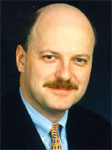 Normally
host countries show their best sides and shiniest sites to visiting dignitaries. When Bruce
Millan, then the EU Commissioner for Regional Development, visited the East Austrian province
of Burgenland back in 1993, he was treated to a rare spectacle. His convoy traveled the
bumpiest country road imaginable. He was invited to witness a folk dance performance of the
local Croat minority in a creaky old barn. Later rustic lunch was served in a historic farmhouse
which also served as a makeshift barracks for young soldiers patrolling Austria's Eastern
border. This was followed with a briefing by the regional governor, Karl Stix, a former school
teacher who explained to his patiently listening guest, a fellow socialist, the tales of
historical woes which had befallen his home state: originally part of German-speaking West
Hungary, the Hungarian military had occupied the area's larger towns in 1919 when the borders
were to be redrawn. During a plebiscite, this prevented the German cities to vote in favor of
accession to Austria, which was joined consequently only by their rural hinterland, renamed
Burgenland. Normally
host countries show their best sides and shiniest sites to visiting dignitaries. When Bruce
Millan, then the EU Commissioner for Regional Development, visited the East Austrian province
of Burgenland back in 1993, he was treated to a rare spectacle. His convoy traveled the
bumpiest country road imaginable. He was invited to witness a folk dance performance of the
local Croat minority in a creaky old barn. Later rustic lunch was served in a historic farmhouse
which also served as a makeshift barracks for young soldiers patrolling Austria's Eastern
border. This was followed with a briefing by the regional governor, Karl Stix, a former school
teacher who explained to his patiently listening guest, a fellow socialist, the tales of
historical woes which had befallen his home state: originally part of German-speaking West
Hungary, the Hungarian military had occupied the area's larger towns in 1919 when the borders
were to be redrawn. During a plebiscite, this prevented the German cities to vote in favor of
accession to Austria, which was joined consequently only by their rural hinterland, renamed
Burgenland.Impoverished and crisis-ridden Austria could do little to help its poor new cousin in the inter-war years. Unemployment and migration—especially to the US—was high. During the last months of the war, Burgenland was conquered and plundered by the Red Army, which stayed until 1955. Then the small state remained cut off in the shadow of the Iron Curtain, which stretched from Slovakia along the Hungarian border down to the Slovene part of Yugoslavia. Now Burgenland faced new low-cost competitors in the liberated East and had to prepare for a borderless future in an enlarged EU. Bruce Millan was a sober Scottish accountant. As a former occupation officer in South East Austria, he was no doubt familiar with local history and the natives' skills in negotiating drama. Whether the visit, Austria's generous global financial offers during the EU membership talks, or Governor Stix's carefully-engineered poverty status carried the day will never be known. In any event, when Austria joined the EU on January 1, 1995, Burgenland secured the coveted "Objective 1" status, which meant EU funds for development had to be matched by only 25% of regional or national funds. 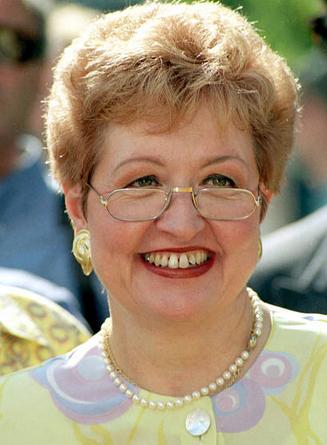 Two
years later, Bruce Millan's successor, a German former trade union leader, Monika Wulf-Matthies,
was flown into Burgenland as well. She was spared the jeep ride and the Croat barn, but rather
flown by military helicopter to a series of cattle pastures where excited local officials
unveiled visions of future industrial riches. Wulf-Matthies, in short speeches, replied that
these would only materialize if they also built proper waste-water facilities, trained the local
women and hired handicapped minority members. The locals inevitably looked slightly baffled as
to why these no doubt worthy but rather peripheral factors would be so decisive, but nonetheless
dutifully assured the Commissioner that they would do their utmost, while her entourage,
including this author, helped themselves to the schnapps (which forms an integral part of
Burgenland hospitality). Two
years later, Bruce Millan's successor, a German former trade union leader, Monika Wulf-Matthies,
was flown into Burgenland as well. She was spared the jeep ride and the Croat barn, but rather
flown by military helicopter to a series of cattle pastures where excited local officials
unveiled visions of future industrial riches. Wulf-Matthies, in short speeches, replied that
these would only materialize if they also built proper waste-water facilities, trained the local
women and hired handicapped minority members. The locals inevitably looked slightly baffled as
to why these no doubt worthy but rather peripheral factors would be so decisive, but nonetheless
dutifully assured the Commissioner that they would do their utmost, while her entourage,
including this author, helped themselves to the schnapps (which forms an integral part of
Burgenland hospitality).Burgenland had always been very close to crossing the 75% EU average-income level above which "Objective 1" status was no longer possible. Back in 1995, it expected to be sponsored only for the period ending 2000. However, they managed to spend their EU funds almost exclusively on largely unused industrial parks, subsequently bankrupted the state budget due to co-financing requirements in the process and drove the largest public Burgenland bank into insolvency. Properly-impoverished Burgenland was thus successful in retaining its "Objective l" status even after the "Agenda 2000" pruning exercise was able to earmark a large chunk of previous aid recipients (including such prominent areas like South and East Ireland, Corsica and Greater Lisbon) for the gradual withdrawal from the cozy world of regional funding. The Burgenland story, in a nutshell, hence raises a couple of interesting questions, starting with the role of the regions in an integrated Europe and ending with the sense and nonsense of regional subsidization. As Europe is not meant to be a melting pot, regional structures and traditions remain strong and alive, economic and cultural globalization notwithstanding. This is not only true in federal EU states like Belgium, Germany and Austria, but also in famously staunch Centrist states like Spain (17 regions with varying degrees of autonomy, including Catalonia, Galicia, the Basque country, the Balearics, etc.), Italy (seven autonomous regions, including South Tyrol-Trient, Fiuli, the Aosta Valley, Sicily, Sardinia, etc.), France (which has set up 22 regions), and even the UK (which has permitted local self-government in London and a Scottish assembly in Edinburgh). Regions predate the nation state, and strong opponents of the latter among postwar European federalists have even proposed a European federation of the 252 regions which can be identified in the EU 15. Yet the fate of contemporary Africa and a bit of historical research shows that societies organized along tribal lines are not by necessity more peaceful than those with effective nation states, which after all represent a higher level of political and cultural development. While the "Europe of Regions" deserves to remain a pipe dream, there is a fair case to be made for stronger regional competences in the name of subsidiary. As enshrined in Maastricht [which established the EU], this principle implies that, wherever possible and sensible, political decisions should be taken at the level closest to the people concerned, where expertise on local conditions and chances of participatory democracy are highest. A high degree of self-determination—of taxation and spending decisions—is helpful at the regional level to encourage rational fund use and to prevent the usual "cultures of dependency" in which "foreign" funds are typically wasted: a stronger regional role is also beneficial for the protection of autochthonous minorities, which typically reside in peripheral regions or in formerly disputed border areas. Effective linguistic and cultural rights and political representation, which is usually more relevant at the regional than at the national level, has proven to diffuse potentially disruptive ethnic disputes which have bedeviled the relations of Europe's nation states for so long. This healthy lesson still needs to be learned in some parts of Eastern Europe and perhaps in Greece as well. It is generally accepted that in the absence of any corrective redistribution, two large central areas would be the main beneficiaries of the EU's huge integrated internal market. Economic geographers have invented these regions. The first is the "trapeze of growth", the prosperous area between London, Paris, Stuttgart, Munich and Copenhagen, on the one hand, and a second even more exotic area termed "Golden Banana", a sort of Alpine sunbelt, stretching from Barcelona via the Cote d'Azur, Lombardy (generously including Switzerland) into Bavaria and Austria. These are the central regions where income and education levels are highest, cultural activities and the quality of life often considered most attractive and where public services and the physical infrastructure are best developed. While labor costs may be higher, costs for transportation and communication are less. In the absence of policy intervention, these privileged regions would attract a strong inflow of investment with concomitant job opportunities and a massive transfer of internal (and external) migrants, thus over-burdening public services, the environment and the infrastructure, leading to social strain, disorganization and housing shortages. Correspondingly, the European periphery, the countryside and certain declining urban areas within the larger growth regions would suffer from depopulation, the out-migration of their best educated, youngest and most dynamic people, witness the unraveling of the economic and social infrastructure and see social alienation and economic stagnation and decline. This disparate regional development hence is undesirable for both sides and sensible instruments of redistributive equity are called for. In a process of trial and error and of political arm twisting, the EU has developed such instruments. After decades of policy-induced expansions of the support area—in 1999 some 50% of EU territory and population benefited from a warm, thin and ineffectual summer rain of EU regional subsidies—in the end, Monika Wulf-Matthies, the tough trade union lady turned Commissioner, managed to consolidate the unwieldy range of overlapping target areas ("objectives") into three, and cut the messy proliferation of alphabet-soup-type Community initiatives down to four. These reforms were part of the Commission's "Agenda 2000" proposals, which were accepted at the Berlin summit in July 1999. The previous "Objective 1" remained in prioritizing support for regions which lagged behind in their economic development, as indicated by a GDP per capita of less than 75% of EU average. The importance of the reform was the recognition of the perceptible improvement of the incomes of formerly deprived regions. Large chunks of Ireland—the East, the North, the South—whose income after two decades of successfully catching up had reached 90% of the EU average in 1995 (1983: 64%), were finally allowed to "graduate", and so was the greater Lisbon area, Hainaut in Belgium, Flevoland in the Netherlands, Corsica, the Highlands and Isles, Asturias in Spain and the Abbruzi in Italy. Their departure from intensive subsidization was to be sweetened with a gradual "phasing out" support as a withdrawal programme to quit the regional subsidy addiction. Those who managed to continually mismanage their regional economy, like most parts of Spain, the remainder of Portugal, Southern Italy, Greece, East Germany, the Burgenland, and chunks of Wales and Cornwall remained, as did France's very European overseas territories of Guyana, Guadeloupe, Martinique and Reunion (for whatever sense it may make that these relaxed colonial leftovers reach any EU average). For good measure the "arctic lands" of Northern Sweden and Finland (formerly "Objective 6") were added, not because they are poor, but to compensate them for long distances and cold dark winters. For the period 2000-2006, 136 billion Euros are earmarked for "Objective 1" territories, home to 22% of the EU's population. They represent 68% of all EU regional funds. If well managed, these funds, aimed foremost at infrastructure modernization, are bound to make a difference. National and regional co-funding requirements remain at 25% only. The new "Objective 2" covers smaller regions, industrial areas in decline and pockets of rural and coastal stagnation. These are parts of North England, of the Midlands, Wales, of Brittany, Normandy, the Ardennes, Lorraine, the Massif Central, large parts of Southern France and North East Spain, Central Italy, of the Alps, the German and Austrian border areas to the Czech Republic, Friesland, Schleswig, some Danish islands, Gotland, parts of Central Sweden and Finland, and Western Karelia. Again the main achievement of the reform was re-focusing. Previously depressed urban and rural areas, which managed their transition successfully—like the East of Scotland, Northern Jutland, the Ruhr area, most parts of Bavaria, the Palatinate, Central Austria and Tuscany—were made to "graduate", once again benefiting from transitional aids to wean them off the subsidy habit. The remaining "Objective 2" regions in crisis are inhabited by 15% of the EU's population. They receive 22.5 billion Euros (or 11.5%) of total EU regional funding. For them the co-financing requirement stands at 50%, which should encourage more sensible projects. Finally there is, as a horizontal theme, "Objective 3", covering all of the EU except for "Objective 1" regions: these are European Social Fund monies for education, training and employment promotion. With 24 billion Euros, "Objective 3" is funded with 12% of all structural funds available during 2000-2006. Still there are the Community initiatives: there used to be a proliferation of a mouth-watering alphabet soup of up to 11 special-interest support schemes (each self-respecting Commission regional officer seemed to have designed his own pet scheme). They were called Konver (transforming armament and garrison towns), Retex (transforming textile towns), Resider (transforming steel towns). Recite (promoting inter-local cooperation). Regis (promoting socio-economic integration), Regen (creating diversified regional energy networks and sources), etc. These worthy, if somewhat confusingly administered and ultimately under-funded causes, were consolidated in four new Community initiatives. The four surviving Community initiatives are: "Leader" for rural areas, "Urban" for run-down metropolitan areas, "Interreg" for regional cross-border cooperation, probably the Union's most effective and best run programme ever, and "Equal", which is to sponsor political and gender correctness wherever for whatever it is worth. The programming and approval procedures are, in principle, relatively straightforward. Regions work out development schemes. These wish lists to Santa Claus are then pruned out by the national government, and coordinated multi-annual development plans with regional and national priorities are submitted to the European Commission. This procedure makes sense: let regional and national authorities weed out fashionable duplication and predictable failures. When I was Head of the Commission's Office in Vienna, there was a relentless stream of well-intentioned visitors who wished their ancestral castles, abandoned after they were looted and burned by the Red Army back in 1945/1946, could be turned into European convention centers once they were restored with the kind help of EU funds. If a village in the Waldviertel dreamt up a golf course as the key for its future development, within a fortnight all of its neighbors came up with the same idea. The same happened with thermal spas in Upper Styria or ski lifts in Tyrol. Early weeding out helps to reduce future inevitable frustration, be it the rejection by the Brussels Eurocrats, or worse, eventual business failure once the funds have been misspent. In the second stage, Community funds are negotiated and agreed between the member state and the Commission in a framework agreement. In the third stage the multi-annual operative programmes are consecutively implemented and jointly funded. As a simplification, development and financing plans comprising own funds, EIB credits and EU funds are jointly elaborated and submitted. The prima facie evidence of regional schemes is not negative. Traveling across Europe you find EU-funded motorways on the arid Canary Islands and Andalusia where they could not have created much environmental damage except for flattening a few scorpions. In Germany and Austria, you witness plenty of possibly redundant niceties: like bicycle ferries across Friesian channels, educational trails in Thyringian mountain swamps. Nothing wrong with them, but should Germany need to pay 2 Euros into the EU budget to get 1 Euro back after a lot of paperwork for swamp hiking trails? Unlikely though this seems, the EU regional development programmes with their requirement of sophisticated planning and cost/benefit assessments have led to a new professionalism in the field, in vivid contrast to old-style political lobbyism—a regional chieftain pushing his more or less unsound pet projects at the national level. When they have reached and survived the European level most, but surely not all, evident insanity will be weeded out (mostly by prescreening procedures). The political importance of regional development is getting more pronounced, notably in the rural field as the CAP's classical product price-support schemes appear as increasingly more failed. The main purpose of rural development is to encourage non-agricultural employment in the countryside and to diversity the rural economy. It could well include thermal spas, golf courses and castle restorations, if they made sense in an integrated rural planning document (and hopefully in reality). The following are favorites for rural development support. Thematic product marketing for regional wines, spirits, beer, cheese, meat, herbs, spices and bio-products. For urban renewal, village restoration, the renovation of local castles, churches, monasteries and other historical landmarks. In the context of soft tourism, the designation of national parks, vacations on farms, water sports, heritage trails, paths for bicycles and horse riding, long-distance skiing, walking and hiking are promoted. For investments in industry and services, high-tech parks with full infrastructural access and the set-up of new businesses is supported. In the rural economy, the processing of food, wood and fibers, rural tourism, electronics and environmental technologies are evergreens in EU promotional schemes, as are waste disposal and waste-water treatment as well as the old classics of irrigation and soil melioration (while paying other land to be put out of production), reforestation and rural roads. In the EU's mountain areas such as the Alps, the Pyrenees, the Massif Central, the Apenines, the Sierra Nevada, the Highlands, etc., some 30 million people face often fairly isolating and tough climatic conditions. EU involvement is called for since most mountain areas are typically underdeveloped ("Objective 1"), otherwise stagnating ("Objective 2"), or disadvantaged ("Leader"). High mountain ranges, like big rivers, have often constituted ethnic and national frontiers in Europe in the past. Economic and infrastructural development then also stopped there. EU intervention is to overcome these barriers and modernize the local economies (confounded by the natural conservatism of the montagnards). The challenge is hence to square the dilemma to try to preserve traditional lifestyles and the old countryside while attempting to modernize it with public money. In concrete terms this aims to stop the depopulation which threatens to unravel the social fabric, including the abandonment of valleys settled for centuries. But it also needs to take proper care of a fragile Alpine environment which should neither become a museum nor a Disneyland. In the mountains the Commission then supports schemes like lavender farming and marketing in France, hiking trails in the Highlands, drinking water on Madeira, local handicraft centers in Portugal and North Sweden, eco-house constructions in Carinthia, etc. Ecological subsidies are given to compensate eco-farmers for their income losses. Thus the UK, France, Spain and German states pay premia for extensive grazing, especially in mountain areas, to maintain traditional crop rotation, to preserve rare-utility animal races, to keep hedges, waterways, natural habitats and to reduce the input of fertilizers, pesticides and herbicides. In large measure these subsidies are reimbursed by EU funds. The regional support story is similar for islands and remote coastal areas. They strongly depend on agriculture and fisheries, which are dead-end for most. The challenge is to develop tourism and shipping where people had not yet had this smart idea. The EU's heart seems to bleed with particular intensity for the French overseas departments (Guadeloupe, Martinique, Guyana, Reunion), which unfortunately forgot to declare independence in time, and now—like the equally-disfavored Canary Islands, Azores and Madeira—suffer from extensive sunshine and long distance from the EU mainland, and from high-cost production in their low-labor-cost Caribbean or Indian Ocean environment. The proud amount of 7 billion Euros has been spent on these territories during the decade 1989-1999 without, of course, being able to make much of a difference to their "natural" handicap. For the European island and coastal economies, most of which enjoy either "Objective 1" or "Objective 2" status, EU support means to support port economies—the classical tasks of stevedoring, transport, distribution, storage and processing—, to promote seaside tourism, not only on the shores of the Mediterranean; and to preserve the fragile coastal ecosystems, which as vital links between land and sea are essential for bio-diversity. In consequence, the EU-funded fishing and shipping museums in Bremerhafen, Urk (Netherlands), and St Nazaire, fleet and port modernization in Peniche (Portugal), riverside development in Belfast, aquaculture in Greece, a second road bridge between the two main islands of Guadeloupe, modernized ports in Italy, Portugal, Ireland and on Martinique, extended airports in Ajaccio (Corsica) and Lanzarote (Azores), a local train on Ruegen, a Russian transit-cargo port in Kokkola (Finland), etc. Europe's civilization is inseparably connected with her urban culture, the freedom of the cities and their hard-fought self-governing rights. Well explained by Max Weber, this distinguishes European urban development from the Asian pattern, let alone from American or African agglomerations. Yet with poorly controlled immigration of low-skilled masses of people from non-European cultures, many of which are either unable or unwilling to integrate, depending on the state of town planning either parts of inner cities (in Brussels, Marseilles, Liverpool, Berlin) or entire previously working-class suburbs (London, Paris, Lyon, Hamburg) risk turning into lawless slums. The EU's urban programme is poorly placed to combat the root causes of urban degradation, which lie in uncontrolled immigration lacking repatriation, poor urban education and industrial decline, but like in similarly-affected US cities it attempts to fight urban blight, stem the flight of the middle classes, the concomitant decline in the tax base and in public services with the usual well-intentioned and equally-ineffectual revitalization programmes. The EU's probably most successful Community initiatives are the successive Interreg programmes. They benefit border regions which, in the past, suffered from truncated infrastructure and economic development that ended at national borders (some member states purposefully had discriminated against these foreign-influenced regions in their national development). Typically-affected border regions have set up spontaneous "Euro-regions" to overcome these externally-imposed barriers to development. Examples of such Euro-regions are the Maas/Lower Rhine between Maastricht, Aachen, Limburg and Liege, the Upper Rhine with Bale, Mulhouse and Freiburg, which even set up a joint airport, the reunited Tyrol area, other adjacent areas of the Alps and the Pyrenees. Along the Isonzo, where Austria and Italy fought 14 bloody battles during WW-I (which inspired a seriously-wounded Ernest Hemingway to write his Farewell to Arms there), a Euro-region now inspires neighboring Italy and Slovenia to a less-poetic joint river clear up scheme. Typical Euro-region activities are regional tourism promotion, cross-border public transport, environmental protection, energy supply and waste-water treatment (which in the past was usually sent downstream across the border untreated). The EU's regional support programmes have grown from 60 billion Euros (1989/1993) to 140 billion Euros (1994/1999) and to 275 billion Euros (2000/2006), including 21 billion Euros of infrastructure bound cohesion funds, and 47 billion Euros of aid for the Eastern accession countries. Quite naturally the beneficiaries have remained silent while critics were vocal. It is in particular German policy-research institutes which claimed the following regarding EU regional funds: • they created cultures of dependency and destroyed incentives for self-help; • for "Objective 1" projects, EU contributions at 75% of costs were too high to optimize project selection; • areas of EU regional support were too large (since 2000, reduced from 50% of the EU's population to 40%); • support allocations were intransparent and inconsistent; • administrative efforts with three levels of administration (regional, national, European) were too cumbersome; • with the economic crisis and budgetary cut backs in the North, cofinancing requirement in the "rich" areas were too high; • the EU's pilot and networking projects served mainly to exchange frustrations at Community procedures and about the Commission's administration. Some of the criticism has been taken into account in the EU's "Agenda 2000" (i.e., by cutting down the irritatingly wild undergrowth of "Community initiatives"). An alternative idea is to distribute EU funds according to a preagreed key of regional solidarity, and to leave regions to use the funds allocated to them freely according to their own best knowledge and responsibility. This worked wonderfully (more or less) in the German West. It patently did not work in East Germany. It would have worked in Ireland, which since the 1970s seriously pursued consistently solid macro-economic policies and over decades pushed human resource development. It would have also worked wonders in Wales, Scotland and the Merseyside where the Regional Development Boards are exceptionally competent. In Greece, however, where on a per capita basis most EU aid is spent, the decade-long PASOK government of left-populist Premier Andreas Papandreou managed to expand the public service massively with his political retainers and left the financing of public infrastructure to the unloved EU. The only major constraint on fund disbursement in Greece was the incompetence of her administration to draft proper development plans and to fill out the proper claims form in time. With the advent of Costas Simitis as the Greek Prime Minister (1996-2004), administrative professionalism, macro-economic solidity and the effectiveness of regional aid have increased considerably. The experience of EU pre-accession funds in Eastern European accession countries has shown that many of them appear all too similar to Papandreou-era managers, eager to "absorb" EU funds as quickly and maximally as possible, with everything else, including the rationale of development, treated as merely annoying formalities. It may well be that without proper macro-economic policies and professional administrative structures, structural funds won't work, but we will see more of them in the new member states regardless. It will remain important to resist politically-favored white elephants and the expansion of unproductive armies of civil servants. Yet, in spite of all odds, the EU undeniably has its fair share of regional success stories—from Southern Ireland to Eastern Finland—which the new Eastern European members should follow in their own interest. As a temporary support for self-help, EU regional support has its legitimate place. As a permanent cash cow for Spanish, East German and Polish politicians, it will be doomed. |
|||||||||||||||||||||||||||||||||||||||||||||||||||||||||||||||||||||||||||||||||||||||||||||||||||||||||||||||||||||||||||||||||||||||||||
5) HISTORICAL BB NEWSLETTER ARTICLES Editor: This is part of our series designed to recycle interesting articles from the BB Newsletters of 10 years ago. Below are two articles from 10 years ago, the first reporting that the EU borders were expanded then, thus 'moving' Burgenland into a more central location within the EU and restoring the historical business and social traffic between Burgenland and West Hungary. The second article harks back further and reports on a 1929 proposal to give farming land to the smallholder peasants of Burgenland at the expense of the large landholders, many of whom were Hungarian magnates, a proposal not well-received by Hungary. THE BURGENLAND BUNCH NEWS - No. 171 January 31, 2008 NEW BURGENLAND BORDER: NO BORDER Membership Editor Hannes Graf writes: From today (December 21), Europe (the European Union) has new borders. The so called Schengen-area gets new borders and all borders are falling at Burgenland. That means the checkpoints are taken off and everybody can cross the invisible border without stopping. Also some small and formerly closed roads, for instance between Bildein and Pornóapáti or Andau to St. Johann, are now open for traffic. New open borders: Chechia - Lower Austria, Upper Austria Slovakia - Lower Austria, Burgenland Hungary - Burgenland Slovenia - Carinthia, Styria, Burgenland All others were opened some time ago. For us (BB) it is very important, because, if someone travels to Austria to search cemeteries or church records, with ancestors on both sides of the former borders, it is now much easier to drive there. (ED Note [Gerry]: These open borders are causing some consternation among local business people. It appears they are concerned about lower prices from either side causing a loss of customers, a personal down side of control relaxation.) THE BURGENLAND BUNCH NEWS - No. 171 January 31, 2008 HISTORICAL BURGENLAND SERIES: AUSTRIA COVETS ESTATE LANDS AS PEASANT FARMS (courtesy Margaret Kaiser) Waterloo Evening Courier, Waterloo, Iowa, Monday, July 29, 1929 PROJECT TO DISTRIBUTE HOLDINGS IN BURGOLAND (sic) RESENTED IN HUNGARY Vienna, July 29 (AP) - In an effort to make self-supporting some 30,000 poverty-stricken peasant farmers in Burgenland, an Austrian parliamentary committee is considering a scheme to distribute big estates in that border province among the small land holders. The project is drawing fire in Hungary for, not only are the estates the property of Hungarians, but also Burgenland was assigned to Austria after a plebiscite in 1919 when Hungary unceasingly claimed that the province was wrongfully detached from that kingdom. Would Redeem with Bonds It has been suggested that all agricultural lands in excess of 14 acres held by a single owner be confiscated, compensation being based upon the productivity of the acres and made in Austrian government bonds redeemable in 50 years. Small farmers who possess less than 15 acres would be given sufficient of the confiscated land to make them self-supporting. There are 30,000 such peasant owners in the province. There are 55,000 small owners all told in Burgenland but about 25,000 can get along with what they have. Fully 25 per cent of the land, however, is owned by less than 1,000 Hungarian magnates led by Prince Paul Esterházy, scion of one of the wealthiest Hungarian families. He owns 200,000 acres of the finest land in Burgenland and also practically the whole of the town of Eisenstadt. Emigration is Excessive The application of Austrian land laws to the Burgenland is not expected to improve relations between Hungary and Austria. In a province where the economic and cultural development of the ordinary people is so low, it is perhaps not surprising that, with the ownership of the land goes, directly or indirectly, control over the appointment of the clergy, teachers and local administrative officials. For Austria, this is of great significance, seeing that many of the landowners in Burgenland are pro-Magyar, and are thus in a position to impair Austrian influence and prepare the way for return of the province to Hungary. Poverty-stricken Burgenland is sending her sons to the United States. More than 80 per cent of all Austria's emigrants are said to be drawn from Burgenland. Had it not been for relatives in the United States who sent money to their folks at home, many a peasant family would have experienced starvation. |
|||||||||||||||||||||||||||||||||||||||||||||||||||||||||||||||||||||||||||||||||||||||||||||||||||||||||||||||||||||||||||||||||||||||||||
6) ETHNIC EVENTS LEHIGH VALLEY, PA Saturday, February 10: Lumpenball at the Lancaster Liederkranz. Music by Die Mädeljäger. Info: www.lancasterliederkranz.com Friday, February 16: Fasching at the Evergreen Heimatbund in Fleetwood. Music by the Walt Groller Orchestra. Info: www.evergreenclub.org Saturday, February 24: Fasching at the Reading Liederkranz. Music by Maria & John. Info: www.readingliederkranz.com Sunday, February 25: Schneeball at the Lancaster Liederkranz. Music by Maria & John. Info: www.lancasterliederkranz.com NEW BRITAIN, CT Friday, February 2, 7 pm: Heimat Abend. Austrian Donau Club, 545 Arch Street, $3. Music by Frank Billowitz. Friday, February 16, 7:30 pm: Heurigan Abend. Austrian Donau Club, 545 Arch Street, $3. Music by Schachtelgebirger Musikanten. |
|||||||||||||||||||||||||||||||||||||||||||||||||||||||||||||||||||||||||||||||||||||||||||||||||||||||||||||||||||||||||||||||||||||||||||
7) BURGENLAND EMIGRANT OBITUARIES Anna Schweihofer (née Prinner)  Anna Rose
Schweihofer, age 91, of St. Clair, Michigan, went to be with our Lord, Friday December 29, 2017. Anna Rose
Schweihofer, age 91, of St. Clair, Michigan, went to be with our Lord, Friday December 29, 2017.Anna was born February 9, 1926 in Sopronbánfalva (Wandorf), Hungary to the late Matthias and Angela (Mesterhazy) Prinner. Anna met the love of her life, Pete, in 1945 in Germany. She became an Air Force wife when she married Pete on November 4, 1946. In 1964 Anna bravely traveled alone with her ten children from the U.S. to live with Pete in Italy, while he was serving in the Air Force. They enjoyed 70 years of marriage before his passing on October 12, 2017. Anna was an active member of St. Mary's Catholic Church, St. Clair, where she was a member of the D of I, Rosary Alter Society and participated in many other ministries of the church. Anna was a devoted catholic, raising her ten children within the church. She was a very caring mother, grandmother, great grandmother and great-great grandmother. She is survived by her children, Dorothy (Stephen) Gilliland, Angela (Mike) Young, Monica Myers, Roseanna (Ron) Roberts, Cindy (Gerry) Corbat, Tim (Alice) Schweihofer, Mary Boese, Theresa (Mark) Ranshaw, Pete (Cathy) Schweihofer and Paula (Bill) Mazzola; 39 grandchildren, 30 great-grandchildren, two great-great-grandchildren; brothers, John and Frank Prinner. She was predeceased by sisters Frida Koch and Katharina "Ida" Koch and her grandson. A Funeral Mass will be Saturday January 6th at 11:00 a.m. at St. Mary's Catholic Church, St. Clair. Interment will be in St. Mary's Cemetery. Visiting hours are Thursday 5:00 to 8:00 p.m. and Friday 3:00 to 8:00 p.m. at Young Funeral Home, China Twp. and Saturday 10 to 11 a.m. at church prior to mass. A rosary will be prayed Friday evening. In lieu of flowers memorials may be made to EWTN (Eternal Word Television Network) or the charity of the donor's choice. To leave a message of comfort visit www.youngcolonial.com. Published in The Times Herald from Jan. 1 to Jan. 2, 2018 Maria Huber (née Taker)  Maria
"Mitzi" Huber, 82 years, of Coplay, passed away on Monday, January 1, 2018 at Lehigh Valley
Hospital Muhlenberg. Maria
"Mitzi" Huber, 82 years, of Coplay, passed away on Monday, January 1, 2018 at Lehigh Valley
Hospital Muhlenberg.She was the wife of Stefan Huber and they celebrated 61 years of marriage on April 11, 2017. Born in Reinersdorf, Austria she was the daughter of the late Franz and Maria Taker. Maria was a member of St. Peter's Catholic Church, Coplay. She worked for the former Cross-Country Clothes as an inspector for many years before retiring. She loved her family very passionately and enjoyed cooking and baking. Survivors: Husband, Stefan; sons Steven and his wife Deb of Schnecksville and Anton and his wife Diane of Northampton, 10 grandchildren and 4 great-grandchildren. She was predeceased by a son Gerhard and a brother Franz. Services: A Mass of Christian Burial will be held at 10:30am on Friday January 5, 2018 at St. Peter's Church 4 S. 5th St. Coplay, PA 18037. Her viewing will be private. Brubaker Funeral Home Inc. 327 Chestnut St. Coplay, PA 18037, formerly Robert A. Hauke Funeral Home is in charge of arrangements. Contributions: In lieu of flowers, memorial donations may be made to St. Peter's Catholic Church, c/o the funeral home. Online condolences can be made to the family at www.brubakerfuneralhome.com. Published in Morning Call on Jan. 3, 2018 Robert S. Creamer  Robert S.
"Bobby" Creamer, 91, formerly of Nazareth and Cherry Hill, passed away peacefully on Saturday,
Dec. 30, 2017, at Gracedale. Robert S.
"Bobby" Creamer, 91, formerly of Nazareth and Cherry Hill, passed away peacefully on Saturday,
Dec. 30, 2017, at Gracedale.Born in Gamischdorf, Austria on March 27, 1926, he was the son of the late Floyd and Marie (Fabsits) Creamer. He was a graduate of Nazareth High School, Class of 1944. Bobby was a self-employed painter. A charter member of Grassy Island Creek Rod & Gun Club of Greeley, Pike County, Bobby enjoyed hunting and shared many fond memories of his stays at the hunting camp. All who had the pleasure of knowing him will miss his infectious laugh and inviting personality. Bobby is survived by two sisters, Annetta Fehnel of Wind Gap, and Maggie Ramage and her husband, Robert, of Maryland, as well as nieces and nephews. Bobby was predeceased by a sister, Irene Stoudt. Services will be private, at the convenience of the family. There will be no calling hours. Arrangements have been entrusted to the George G. Bensing Funeral Home, Inc., Village of Moorestown, Bath. George Bensing Funeral Home 2165 Community Drive Bath, PA 18014 (610) 759-3901 Published in The Express Times from Jan. 3 to Jan. 4, 2018 Margit Ertl (née Domyan)  Margit
Ertl, 83, of Bethlehem, Pennsylvania, died on Tuesday, January 2, 2018 at Easton Hospital. Margit
Ertl, 83, of Bethlehem, Pennsylvania, died on Tuesday, January 2, 2018 at Easton Hospital.She was the wife of the late John P. Ertl for 52 years. Born in Rábatótfalu (Slovenska ves/Windischdorf), Hungary to the late Karoly and Ilona (Simenek) Domyan, Margit immigrated to the United States in 1958. She worked in the garment industry as a presser for 37 years in many Lehigh Valley area factories, retiring in 1996. She was also a member of the I.L.G.W.U. Margit was previously a parishioner of St. John Capistrano Catholic Church and more recently of Our Lady of Perpetual Help Catholic Church. Survivors: Margit is survived by her sisters, Helen Pinter and Anna Kozo both of Bethlehem, Ibolya Domyan, Theresa Szakaly and her brother, Karl Domyan all of Austria, as well as her nieces and nephews. She was predeceased by her brother Joseph Domyan. Services: Arrangements have been entrusted to Connell Funeral Home. A visitation will be held at Our Lady of Perpetual Help Catholic Church, 3219 Santee Rd. Bethlehem, PA 18020 on Wednesday, January 10, 2018 from 9:00-9:45 a.m. with Mass of Christian Burial to follow at 10:00 a.m. Burial will be held at Holy Saviour Cemetery. Contributions: In lieu of flowers, memorial contributions may be made to the church and/or American Heart Association, 968 Postal Rd #110, Allentown, PA 18109. Condolences may be offered at www.connellfuneral.com. Published in Morning Call on Jan. 7, 2018 Agnes A. Elli  The final
entry in her journal has been written. Agnes A. Elli, 100, passed away on Tuesday, January 9,
2018 in Memorial Hospital. The final
entry in her journal has been written. Agnes A. Elli, 100, passed away on Tuesday, January 9,
2018 in Memorial Hospital. Agnes was born on April 4, 1917 in Nikitsch Burgenland, Austria to Paul and Martha (Lakovits) Perneker. She was a member of St. Matthew Cathedral, its Altar & Rosary Society and the former St. Anthony Society Ladies Auxiliary. On June 28, 1941 she married John J. Elli. He died on June 26, 1993. Agnes was also preceded in death by a daughter Judy Chrapliwy, four sisters Mary Perneker, Anna Perneker, Kristina Kovall and Frances Hinkle and two brothers Frank Perneker and Victor Perneker. Surviving are two sons Robert (Kathy) Elli of Mishawaka and John (Leora) Elli of Germantown, TN, 13 grandchildren Kerry (Jen) Chrapliwy, Keith (Megan) Chrapliwy, Allison (Justin) Russell, Andrea Chrapliwy, Erika Chrapliwy, Martha (Bill) Dorsch, Sarah Elli, Ted (Janis) Elli, Sam (Kim) Elli, Sean (Jane) Elli, Darci (Scott) Hook, Miriam (Wes) Clark, Aaron (Theresa) Prather, 23 great-grandchildren Ben, Julia, Olivia, Kate, Mason, Gabriel, Jackson, William, Gracen, Graham, Emily, Lauren, Braxton, Alicen, Cash, Alyssa, Aiden, Avery, Henry, Lillian, Sophia, Sydney, and Will and numerous nieces and nephews. A Mass of Christian Burial will be celebrated at 10:00am Monday, January 15, 2018 in St. Matthew Cathedral. Burial will follow in Cedar Grove Cemetery. Family and friends may call from 2-8 Sunday in the Zahoran Funeral Home, 1826 Kemble Avenue where a rosary will be recited at 3:00pm. Memorial contributions may be made to the Bishop Crowley Education Fund. To leave an online condolence, please visit www.zahoran.com. Published in South Bend Tribune on Jan. 11, 2018 Theresia Merkli (née Schmidt)  Theresia
Merkli, 94, of Mansfield, Ohio, passed away January 19, 2018 at Winchester Terrace. Theresia
Merkli, 94, of Mansfield, Ohio, passed away January 19, 2018 at Winchester Terrace.She was the wife of the late Gustav Merkli. Theresia was born April 21, 1923 in Rábafüzes (Raabfidisch) Hungary to Johann and Anna (Heber) Schmidt. She came to Mansfield in 1956 and worked for the North American Knitting Mill. Survivors include her son Erwin (Mathilde) Merkli of Mansfield, daughter Gertrude (Robert) Brkich of California; four grandchildren; eight great-grandchildren. In addition to her parents she was preceded in death by her husband, Gustav; a brother; and two sisters. Friends may call at St. Peter's Catholic Church, 54 N. Mulberry Street on Friday from 12-1pm. A Mass of Christian Burial will follow at 1pm with Rev. Gregory Hite officiating. Burial will follow at Mansfield Catholic Cemetery. In lieu of flowers, memorial contributions may be made to the American Cancer Society. Herlihy-Chambers Funeral Home is assisting the family with arrangements (www.herlihy-chambers.com). Published in the News Journal on Jan. 24, 2018 |
|||||||||||||||||||||||||||||||||||||||||||||||||||||||||||||||||||||||||||||||||||||||||||||||||||||||||||||||||||||||||||||||||||||||||||
| END OF NEWSLETTER (Even good things must end!) |
|||||||||||||||||||||||||||||||||||||||||||||||||||||||||||||||||||||||||||||||||||||||||||||||||||||||||||||||||||||||||||||||||||||||||||
NOTICE (Informal Terms and Conditions): The Burgenland Bunch (BB) was formed and exists to assist Burgenland descendants in their research into their heritage and, toward that end, reserves the right to use any communication you have with us (email, letter, phone conversation, data upload, etc.) as part of our information exchange and educational research efforts. ● If you do not want your communication to be used for this purpose, indicate that it is "confidential" and we will attempt to abide by that request. ● Correspondents who communicate with the BB without requesting confidentiality retain their copyright but give a non-exclusive license to the BB allowing us to forward to BB members, publish in our monthly newsletter or on our website, and/or subsequently and permanently archive all or parts of such communications. The formal Burgenland Bunch Website Usage Agreement can be found here: Agreement The Burgenland Bunch homepage (website) can be found at: the-burgenland-bunch.org Burgenland Bunch Newsletter, copyright © 2018 by The Burgenland Bunch All rights reserved. Permission to copy excerpts granted if credit is provided. |
|||||||||||||||||||||||||||||||||||||||||||||||||||||||||||||||||||||||||||||||||||||||||||||||||||||||||||||||||||||||||||||||||||||||||||
 News
News Ulysses
(excerpts)
Ulysses
(excerpts)

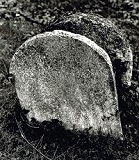 Online
Digital Death Index for the Deutschkreutz Jewish Community: Genealogist
Traude Triebel reports that the Austrian Jewish Museum (Österreichischen Jüdischen
Museum, OJM) has released an online digital death index for Deutschkreutz (Sopronkeresztúr,
Németkeresztúr) for the period May 1833 to July 1895 (except years 1853, 1855-1859 and 1869,
which do not exist).
Online
Digital Death Index for the Deutschkreutz Jewish Community: Genealogist
Traude Triebel reports that the Austrian Jewish Museum (Österreichischen Jüdischen
Museum, OJM) has released an online digital death index for Deutschkreutz (Sopronkeresztúr,
Németkeresztúr) for the period May 1833 to July 1895 (except years 1853, 1855-1859 and 1869,
which do not exist). This
year's harvest was the first, and the six-year-old trees yielded around a kilo of olives each,
which is considered a success because it shows that the olive trees can withstand Burgenland's
winter temperatures.
This
year's harvest was the first, and the six-year-old trees yielded around a kilo of olives each,
which is considered a success because it shows that the olive trees can withstand Burgenland's
winter temperatures.  "You
work a lot together with architects and make new, interesting things, modern designer things,"
says blacksmith Andreas Böck. The 38-year-old Böck always wanted to take over the father's
workshop. Even as a child, the master blacksmith spent a lot of time in the smithy. And he hopes
that one of his two sons will eventually be enthusiastic about the traditional family craft. The
processing of iron both exerts a great fascination on him and requires a lot of knowledge by
him. "If the iron is yellow, about 1,200 degrees Celsius, it is best for processing. If the
iron goes red, it will be quite hard and brittle," says Böck.
"You
work a lot together with architects and make new, interesting things, modern designer things,"
says blacksmith Andreas Böck. The 38-year-old Böck always wanted to take over the father's
workshop. Even as a child, the master blacksmith spent a lot of time in the smithy. And he hopes
that one of his two sons will eventually be enthusiastic about the traditional family craft. The
processing of iron both exerts a great fascination on him and requires a lot of knowledge by
him. "If the iron is yellow, about 1,200 degrees Celsius, it is best for processing. If the
iron goes red, it will be quite hard and brittle," says Böck. Update
for book "The Burgenländer Emigration to America": Here is this month's update on
purchases of the English issue of the 3rd edition of Dr. Walter Dujmovits' book "Die
Amerika-Wanderung Der Burgenländer."
Update
for book "The Burgenländer Emigration to America": Here is this month's update on
purchases of the English issue of the 3rd edition of Dr. Walter Dujmovits' book "Die
Amerika-Wanderung Der Burgenländer." ANGELA'S
APPLE FLECKEN
ANGELA'S
APPLE FLECKEN  Reminder:
We no longer have a "regular" source for Burgenland recipes. As evidenced above, a few readers
have shared favorite family recipes, and we do have a reserve for a couple of months now, but if
contributions stop coming in, we'll be begging again! So, please consider sharing your favorite
Burgenland recipes or recipe books with us. Our older relatives sadly aren't with us forever, so
don't allow your allow your favorite ethnic dishes to become lost to future generations. Send
your suggestions to BB Recipes Editor,
Reminder:
We no longer have a "regular" source for Burgenland recipes. As evidenced above, a few readers
have shared favorite family recipes, and we do have a reserve for a couple of months now, but if
contributions stop coming in, we'll be begging again! So, please consider sharing your favorite
Burgenland recipes or recipe books with us. Our older relatives sadly aren't with us forever, so
don't allow your allow your favorite ethnic dishes to become lost to future generations. Send
your suggestions to BB Recipes Editor,

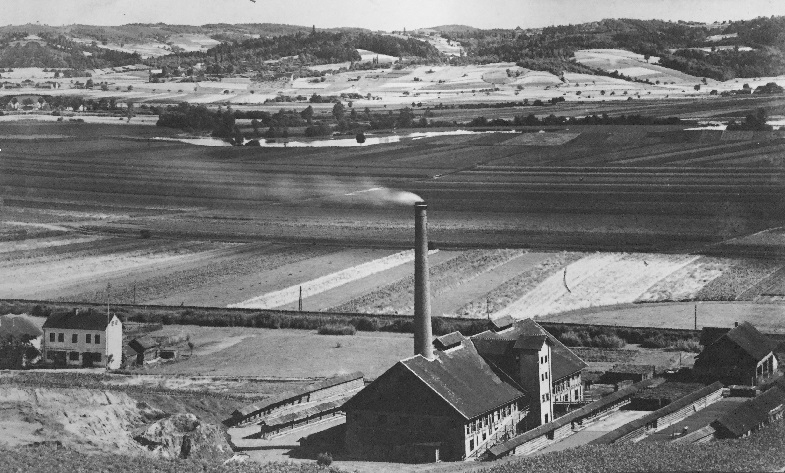
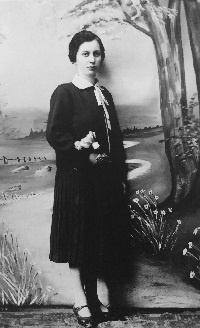
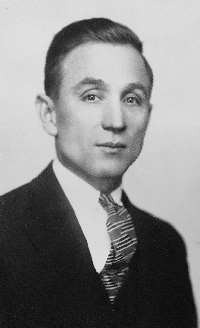
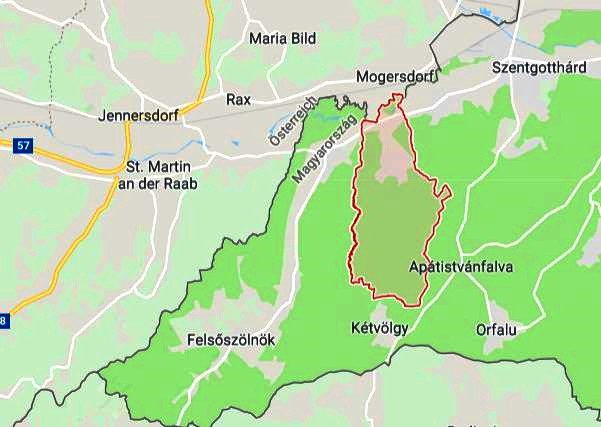
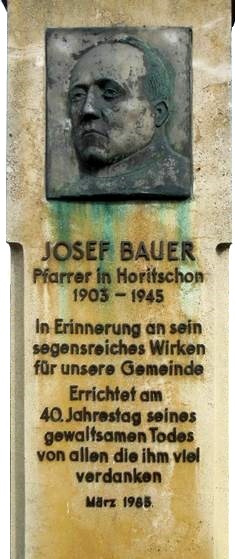 On
March 29, 1945, it was the Green-Thursday [Ed: Maundy Thursday], the Burgenland
became an immediate combat area. (15) The population escaped to the cellars in order to protect
themselves, on the one hand, from the effects of the armed forces, on the other hand also from
the attacks of Soviet soldiers. Many people, especially children, girls, women and old people,
sought shelter in the parsonage because they felt safer there. In Horitschon, pastor Josef Bauer
was shot on 31 March 1945 while attempting to protect women who had taken refuge in the rectory.
A Redemptorist Father, who was fluent in the Russian language, was able to prevent many riots.
(16)
On
March 29, 1945, it was the Green-Thursday [Ed: Maundy Thursday], the Burgenland
became an immediate combat area. (15) The population escaped to the cellars in order to protect
themselves, on the one hand, from the effects of the armed forces, on the other hand also from
the attacks of Soviet soldiers. Many people, especially children, girls, women and old people,
sought shelter in the parsonage because they felt safer there. In Horitschon, pastor Josef Bauer
was shot on 31 March 1945 while attempting to protect women who had taken refuge in the rectory.
A Redemptorist Father, who was fluent in the Russian language, was able to prevent many riots.
(16)